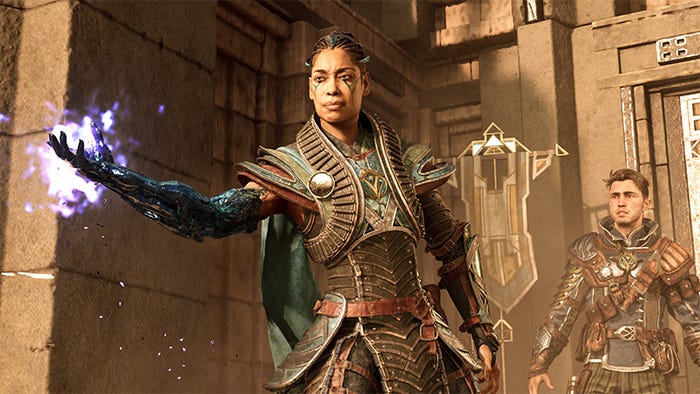Game Development Salary Survey 2002
The past year brought a lot of changes to the game industry and the economy. See how you're doing compared to the 2,524 games developers represented in this year's salary survey.

The past year has brought a lot of changes to the game industry, the job market, and the economy as a whole. The success of new and existing hardware last year helped pump an unprecedented $9.4 billion in total game-related sales into a sagging U.S. economy and has generated a lot of mainstream interest in game development careers.
While some outsiders have yet come to grips with the fact that there’s more to making games than playing them all day, and some battle-worn industry veterans have absconded to higher-paying tech sectors (or any job with what resembles regular work hours), this survey represents the tens of thousands of U.S. professionals who make their living developing games.
This year’s survey was conducted by research firm Audience Insights. In March 2002, 1,178 Game Developers Conference attendees took our comprehensive annual survey, of which the salary survey is one module, using on-site tablet computers. Then, in April, we e-mailed invitations to all Game Developer magazine subscribers and Gamasutra.com members asking them to participate in the survey and received 5,256 responses.
The survey data presented here is based on a total of 2,524 responses that remained after we eliminated responses that provided no numerical compensation data and those whose compensation figures were less than $10,000 or greater than $300,000 per year. We also eliminated responses that lacked certain demographic and classification information.
The sample represented in the salary survey data can be projected to the game development industry as a whole with a margin of error of 1.93 percent at the 95 percent confidence level. That means we can say with 95 percent certainty that the aggregate statistics reported in this survey would stay consistent within the margin of error across the entire population.
While the industry job market has remained healthy overall, it hasn’t been immune to layoffs and other corporate casualties of an increasingly competitive marketplace. The past year’s unprecedented success was wrought in no small part by the dogged work and incalculable overtime on the part of thousands of game developers. Game developers are known to thrive on challenge, though, and they got it in spades in the form of new hardware, changing market demographics, and relentless jockeying for position from publishers and hardware vendors.
What’s the payoff for facing all these challenges? The overly simple answer appears on the following pages. But when a developer stands in a store and sees a game buyer longingly caress his or her creation, all that matters is the love of the game.
Programming
Programmers always seem to be in demand, and accordingly many find their jobs very demanding. The hours are long, the crunch modes interminable, the bug lists endless. Among the rank and file of programmers and senior programmers at most game companies you will likely find developers with a mastery of at least several of the industry’s most in-demand skills: AI, networking, tools development, 3D math, physics, and preferably the ability to invert matrices in one’s sleep.
With the growing focus on console game development, gameplay programming skills are rising in demand. Coding that may have been a virtual afterthought on a PC title now requires far more man-hours for fine-tuning the responsive kinds of gameplay favored by console game players. You can program in all the fluid dynamics simulations and volumetric fog you want in a scene pushing hundreds of thousands of polygons, but if someone holding the joypad isn’t having fun with the controls, your sales (and perhaps your royalties) will suffer.
Experience and reliability are other sought-after qualities, ones which pay off in higher salaries for seasoned programmers. For those who have stuck it out for several years and have a proven track record, compensation increases accordingly to reflect both the employee’s experience and the reduced investment risk on the part of the employer.
Programmers generally report to a lead programmer responsible for planning and scheduling programming tasks for a project. At companies with multiple projects, several leads may report into a technical director, who oversees programming productivity for the whole company and perhaps spearheads tools and technology development to be shared across teams. At single- project companies, these responsibilities often fall with those of a lead programmer upon a single individual.
Art
Artists make up an increasingly significant chunk of game development talent, as every generation of technology brings with it more polygons to be modeled, more characters to be animated, and more faces to be plastered with detailed textures. For the purposes of our survey, we considered as artists those who described themselves as artists, modelers, animators, texture artists, concept artists, and graphic or interface designers. We grouped lead artists and lead animators under the single classification of lead artist, those who manage and schedule teams of artists. At multiple-project companies, several leads might report into an art director, who might be responsible for making technology decisions and perhaps coordinating a certain look and feel across a range of products.
As with the other disciplines featured in this survey, experience pays. Hiring rookie artists unfamiliar with the rigid technical boundaries of game production environments can be risky when output demands are high and headcount is not. Clearly, though, there are rewards to sticking it out for a few projects, as compensation increases to where the most experienced artists can command much higher salaries.
The pay disparity between programmers and artists in the game industry is not a well-kept secret, but supply and demand is ever at play in any market, including the job market. Turnover and layoffs can be more tumultuous for artists as well, with the ebb and flow of art needs between major projects. However, one bright spot in our survey shows that roughly the same percentage of artists as programmers are being offered compensation plans above their base salary, and artists are taking home slightly more above-base compensation on average than programmers, which can help offset their generally lower base salaries.
Design
Game design is the development discipline that perhaps holds the most cachet among lay folk, and not coincidentally it is both very competitive to break into and very hard to delineate in terms of required skills. Our survey considered designers to be those respondents who described themselves as game designers, level designers, lead designers, creative directors, and writers.
With so many people dreaming of breaking into a game design career, it’s no surprise that salaries are low relative to other disciplines. But since having a good idea for a game and actually making a good game are two very different things, those designers who have the most experience, six years or more, are rewarded with more generous compensation.
Above-base compensation is also lower and less common among game designers compared to other disciplines, again likely due to the competitive nature of the job and relative paucity of positions available.
Production
A producer’s job can run the gamut from devising budget plans to managing QA to ordering takeout for the team during crunch modes. These are the people who simply do whatever needs to be done to get a game out the door on time, on budget, and of high quality. For the purposes of this survey, we considered a producer to be all those who described themselves as either a producer, associate producer, executive producer, or project lead/manager. Producers typically handle the day-to-day minutiae that spawn relentlessly throughout the course of a complex project and all its components. An executive producer might have additional roles within a company and thus oversee a game’s development from a broader viewpoint, or may supervise several producers on several different teams.
Almost half the producers surveyed reported experience of six or more years, and their employers seem to like what they’ve done; their salaries far exceed their less experienced colleagues’.
Audio
The audio discipline includes those who describe themselves as audio engineers, sound designers, composers, and the everpopular “audio guy.” With so many independent contractors plying their trade in the game audio business, this segment is perhaps subject to greater influence by the vagaries of the economy as a whole. Still, the most recent crop of game consoles has made sophisticated audio output a major selling point, and consumers seem responsive to the extra care developers are devoting to music and sound effects, a fact that should give designers and producers pause before simply farming out their game’s audio to the lowest bidder.
Every generation removed from bleeps and blips that we are makes life better for game audio professionals. As tools improve and more development studios bring audio in-house with full-time audio personnel, the next few years should see an abundance of new and better opportunities for game audio professionals.
Other Trends
For developers feeling older and wiser than they were a year ago, it’s not their imagination. This year 31 percent of survey respondents reported being in the game industry at least six years, compared with just 19 percent in our 2001 survey.
The western U.S. was both the best represented among our survey respondents and also the best paid. Clearly salaries rise with geographic competition where game development studios cluster, as can be seen with Texas far outpacing the rest of the southern states.
What can only charitably be called a gender imbalance still exists among game developers; this year’s survey produced 5.2 percent female respondents overall, a slight drop from the 6.0 percent reported last year. Women in the industry on average made 89 cents on the dollar compared to men, which exceeds the national average of 76 cents on the dollar as reported by the Bureau of Labor Statistics for 2000, the most recent year for which such data is available.
Read more about:
FeaturesAbout the Author(s)
You May Also Like













